François Lanusse
Hybrid Physical-Neural Simulator for Fast Cosmological Hydrodynamics
Oct 30, 2025Abstract:Cosmological field-level inference requires differentiable forward models that solve the challenging dynamics of gas and dark matter under hydrodynamics and gravity. We propose a hybrid approach where gravitational forces are computed using a differentiable particle-mesh solver, while the hydrodynamics are parametrized by a neural network that maps local quantities to an effective pressure field. We demonstrate that our method improves upon alternative approaches, such as an Enthalpy Gradient Descent baseline, both at the field and summary-statistic level. The approach is furthermore highly data efficient, with a single reference simulation of cosmological structure formation being sufficient to constrain the neural pressure model. This opens the door for future applications where the model is fit directly to observational data, rather than a training set of simulations.
Lost in Latent Space: An Empirical Study of Latent Diffusion Models for Physics Emulation
Jul 03, 2025Abstract:The steep computational cost of diffusion models at inference hinders their use as fast physics emulators. In the context of image and video generation, this computational drawback has been addressed by generating in the latent space of an autoencoder instead of the pixel space. In this work, we investigate whether a similar strategy can be effectively applied to the emulation of dynamical systems and at what cost. We find that the accuracy of latent-space emulation is surprisingly robust to a wide range of compression rates (up to 1000x). We also show that diffusion-based emulators are consistently more accurate than non-generative counterparts and compensate for uncertainty in their predictions with greater diversity. Finally, we cover practical design choices, spanning from architectures to optimizers, that we found critical to train latent-space emulators.
Learning Diffusion Priors from Observations by Expectation Maximization
May 22, 2024Abstract:Diffusion models recently proved to be remarkable priors for Bayesian inverse problems. However, training these models typically requires access to large amounts of clean data, which could prove difficult in some settings. In this work, we present a novel method based on the expectation-maximization algorithm for training diffusion models from incomplete and noisy observations only. Unlike previous works, our method leads to proper diffusion models, which is crucial for downstream tasks. As part of our method, we propose and motivate a new posterior sampling scheme for unconditional diffusion models. We present empirical evidence supporting the effectiveness of our method.
Neural Posterior Estimation with Differentiable Simulators
Jul 12, 2022
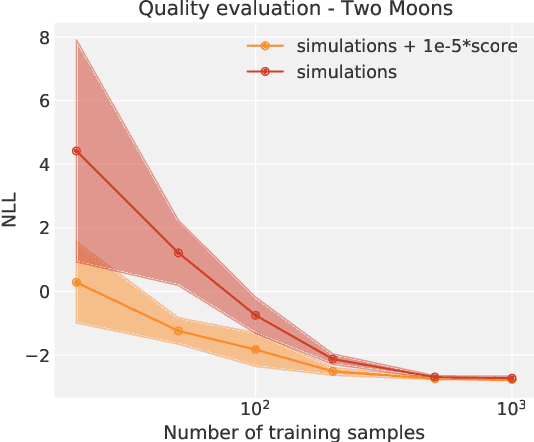
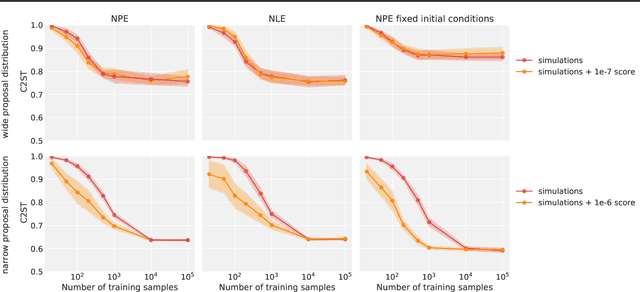
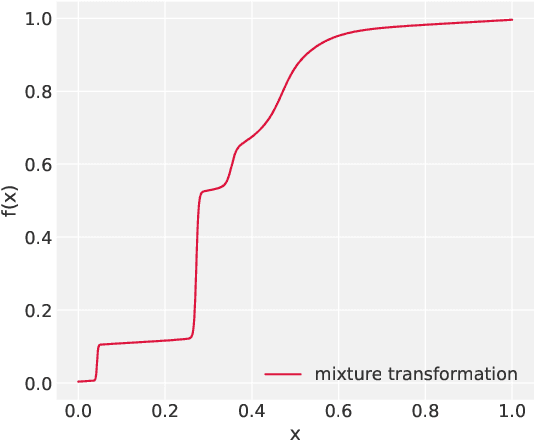
Abstract:Simulation-Based Inference (SBI) is a promising Bayesian inference framework that alleviates the need for analytic likelihoods to estimate posterior distributions. Recent advances using neural density estimators in SBI algorithms have demonstrated the ability to achieve high-fidelity posteriors, at the expense of a large number of simulations ; which makes their application potentially very time-consuming when using complex physical simulations. In this work we focus on boosting the sample-efficiency of posterior density estimation using the gradients of the simulator. We present a new method to perform Neural Posterior Estimation (NPE) with a differentiable simulator. We demonstrate how gradient information helps constrain the shape of the posterior and improves sample-efficiency.
Hybrid Physical-Neural ODEs for Fast N-body Simulations
Jul 12, 2022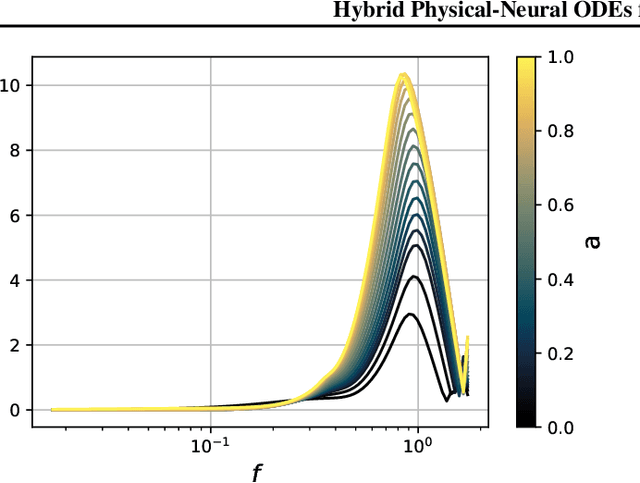

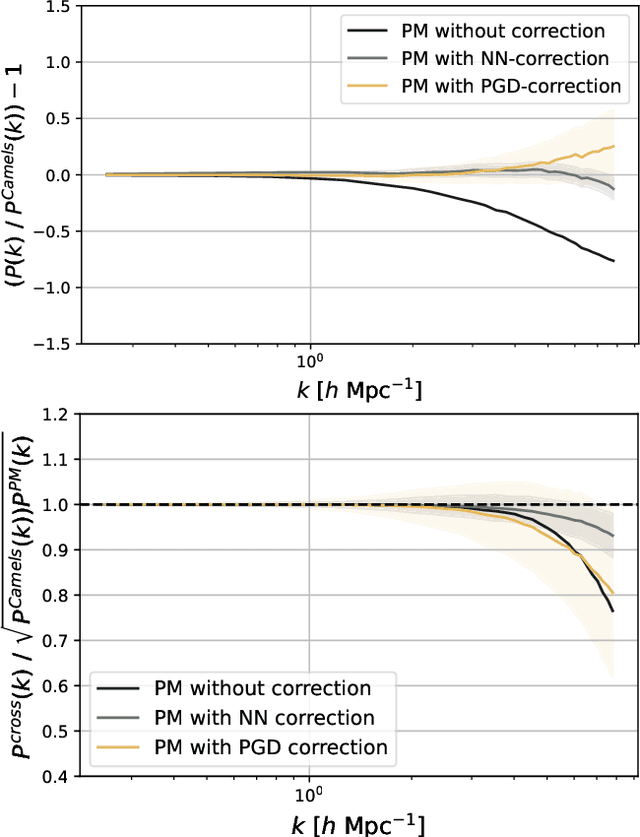
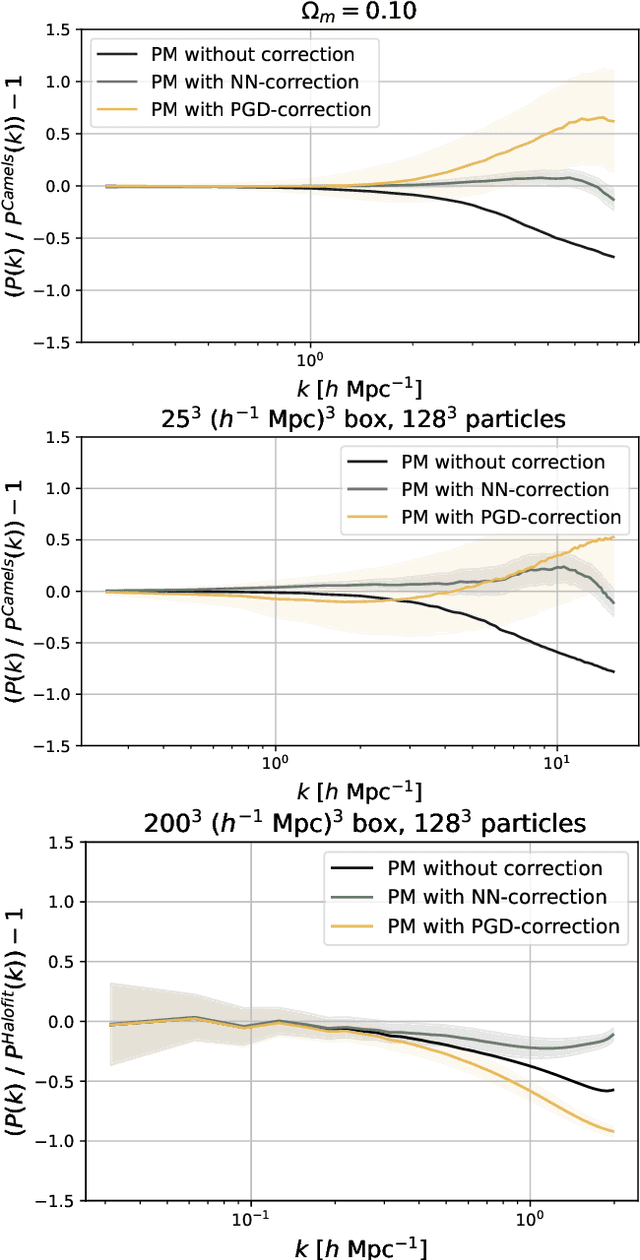
Abstract:We present a new scheme to compensate for the small-scales approximations resulting from Particle-Mesh (PM) schemes for cosmological N-body simulations. This kind of simulations are fast and low computational cost realizations of the large scale structures, but lack resolution on small scales. To improve their accuracy, we introduce an additional effective force within the differential equations of the simulation, parameterized by a Fourier-space Neural Network acting on the PM-estimated gravitational potential. We compare the results for the matter power spectrum obtained to the ones obtained by the PGD scheme (Potential gradient descent scheme). We notice a similar improvement in term of power spectrum, but we find that our approach outperforms PGD for the cross-correlation coefficients, and is more robust to changes in simulation settings (different resolutions, different cosmologies).
Bayesian Neural Networks
Jun 02, 2020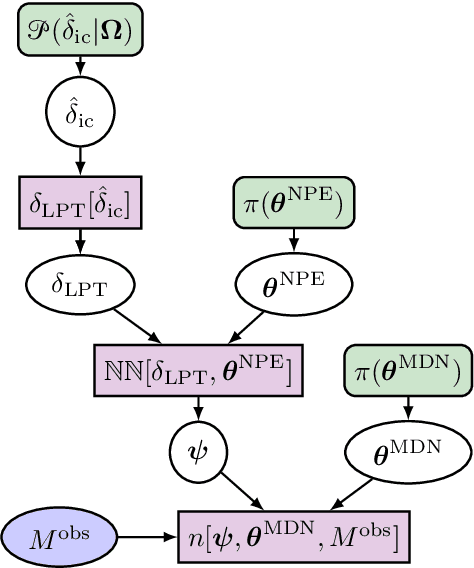
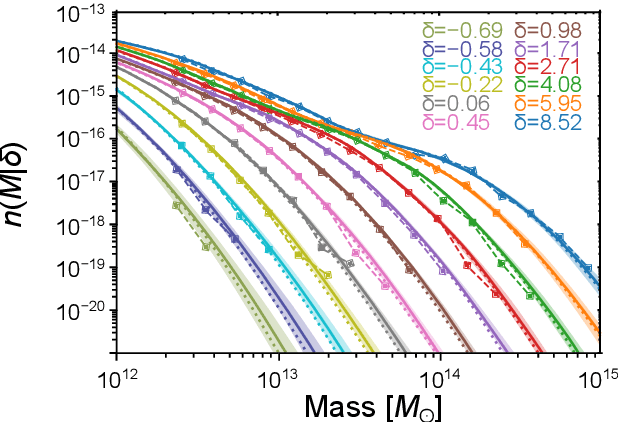
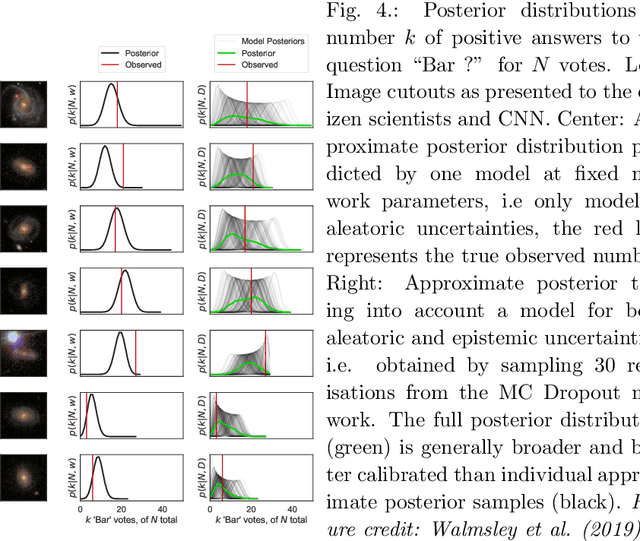
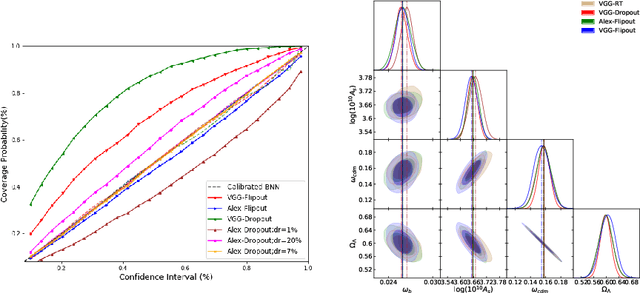
Abstract:In recent times, neural networks have become a powerful tool for the analysis of complex and abstract data models. However, their introduction intrinsically increases our uncertainty about which features of the analysis are model-related and which are due to the neural network. This means that predictions by neural networks have biases which cannot be trivially distinguished from being due to the true nature of the creation and observation of data or not. In order to attempt to address such issues we discuss Bayesian neural networks: neural networks where the uncertainty due to the network can be characterised. In particular, we present the Bayesian statistical framework which allows us to categorise uncertainty in terms of the ingrained randomness of observing certain data and the uncertainty from our lack of knowledge about how data can be created and observed. In presenting such techniques we show how errors in prediction by neural networks can be obtained in principle, and provide the two favoured methods for characterising these errors. We will also describe how both of these methods have substantial pitfalls when put into practice, highlighting the need for other statistical techniques to truly be able to do inference when using neural networks.
Uncertainty Quantification with Generative Models
Oct 22, 2019
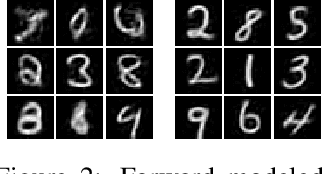
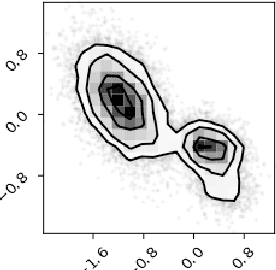
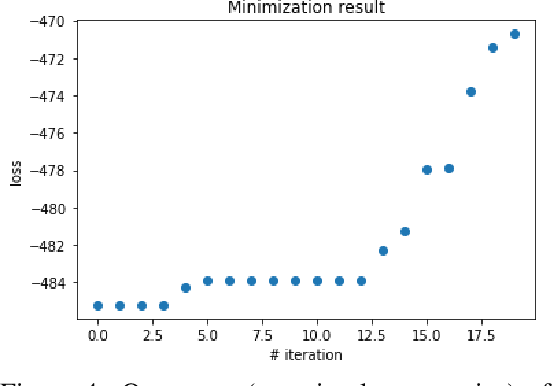
Abstract:We develop a generative model-based approach to Bayesian inverse problems, such as image reconstruction from noisy and incomplete images. Our framework addresses two common challenges of Bayesian reconstructions: 1) It makes use of complex, data-driven priors that comprise all available information about the uncorrupted data distribution. 2) It enables computationally tractable uncertainty quantification in the form of posterior analysis in latent and data space. The method is very efficient in that the generative model only has to be trained once on an uncorrupted data set, after that, the procedure can be used for arbitrary corruption types.
 Add to Chrome
Add to Chrome Add to Firefox
Add to Firefox Add to Edge
Add to Edge